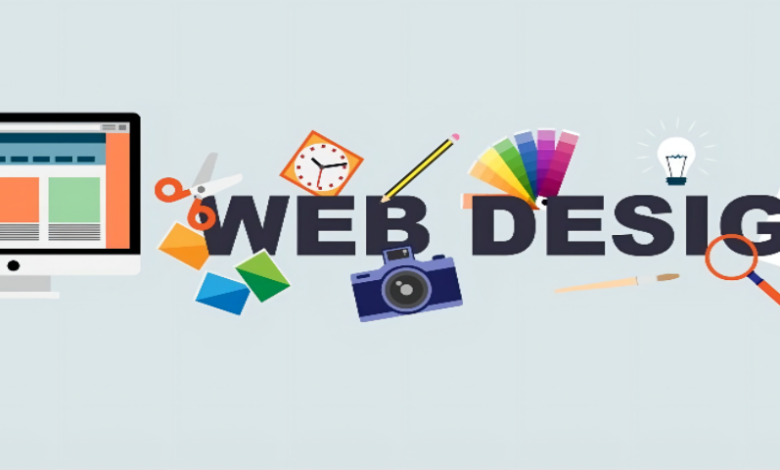Will AI Replace Graphic Designers? A Look at the Future of the Industry

The world has seen an exceptional rise in artificial intelligence (AI) and its application in recent years.
AI has increasingly entered into the visual arts, helping designers by improving their level of creativity, minimizing workflow, and creating new opportunities for them. Many graphic design companies in Dubai and other regions are adopting the new AI trend.
These days AI technology is assisting designers with daily tasks in their jobs since the start. It is no shock that now they are relying more on them.
The design industry might change as a result of the shift toward artificial intelligence, but will the machines ever replace human designers?
Before moving toward the question that you are here for that will AI replace graphic designers? Let’s get the details about what Generative AI is and its rise in graphic design.
AI and Its Rise in Graphic Design
Graphic design with generative AI functions as an embedded virtual artist in the digital world of graphic design. Imagine a graphic designer from a design company in Dubai, the UK, the USA, or Canada using Photoshop’s autocorrect feature to magically replace a background while drawing inspiration from an extensive collection of previously created pieces of art.
Using algorithms, this novel technology makes sense of complex parts and patterns that are kept in a large creative database. It weaves these bits of inspiration into completely new and compelling patterns that catch the eye and ignite the imagination through a process similar to recreating traditional approaches.
The use of AI in graphic design has been here for a long time now. It is nothing new that AI is taking over most of the human work. Through machine learning and deep learning algorithms, AI helps in the development of various complex tools.
With the help of these advancements, graphic designers from a design company in Dubai, Canada, the UK, or the USA may automate many tasks, increasing work productivity and speed of different creative processes.
The creative landscape has changed so quickly due to the increased demand and rise of AI in graphic design, with automated design tools, generative adversarial networks (GAN), and machine learning algorithms at the forefront.
Some people raised the question about whether machines may replace designers and visual artists from several graphic design companies in Dubai, the UK, the USA, or Canada due to the arrival and advancements of artificial intelligence
Threat to graphic designers who are providing graphic design services
The field of graphic design is beginning to incorporate artificial intelligence. Can AI, however, ever take the position of graphic designer? Examining the possible risks AI brings to the profession of graphic design is essential as we investigate this complicated subject.
The capacity of AI to create artistic content, such as logos and marketing collateral, has garnered significant attention.
Numerous examples exist of AI systems producing designs that are identical to those created by human hands.
The area where AI algorithms can most readily do repetitive and entry-level design jobs is where graphic designers are most at risk.
A growing number of people are worried that designers will be replaced in professions that require creativity and a sophisticated awareness of cultural context as technology continues to streamline portions of design production.
Graphic designers from different graphic design companies in Dubai or the UK and, the US are known for delivering various business strategies visually. Now, they are facing many challenges: In what way can they highlight the importance of the human element in their work?
A human touch in graphic design
The creative, intuitive, and emotive aspects of the human touch are just as important to graphic design as aesthetics.
Designers from any design company in Dubai, the UK, the USA, or Canada should never stop stressing the value of human participation in creating works of art, and even as they become more adept at working with artificial intelligence.
Artificial intelligence (AI) might be great at reproducing patterns and creating designs from data, but it lacks the innate creativity of human thought.
The domain of human designers continues to encompass the capacity to conceive and implement complex, abstract concepts, as well as to give designs emotional resonance and cultural significance.
AI is limited when it comes to complicated, subtle design jobs that require the depth of human creativity that AI finds difficult to imitate, such as developing a brand identity that appeals to a particular audience or fully communicating an artistic vision.
Beyond design, the human touch is seen in cooperation and communication. To assist customers achieve better business results, designers frequently collaborate with them to comprehend their vision, interpret brand values, and create visually striking designs.
AI systems currently lack the empathy, cultural awareness, and capacity to traverse subjective preferences necessary for the complex, dynamic process that is human contact.
Consequently, when discussing how AI is affecting graphic design, it is important to remember that maintaining the subtleties and unique human touch in the creative process is equally as important as technological expertise.
The Ugly Truth: AI’s Restrictions in Graphic Design
Even while developments in machine learning and artificial intelligence have been fascinating, it’s critical to understand the limitations of these technologies.
The hard reality is that AI’s built-in limitations are where great creativity and uniqueness are found.
While artificial intelligence relies on algorithms and learning patterns to function, the results are more often imitations of current trends than original works of art.
Pushing limits and thinking outside of existing norms are just two examples of what it takes to create a truly inventive design—human traits that are now limited to the creative process.
For instance, AI is unable to completely comprehend the subtleties of emotional tone and cultural context, both of which are necessary for effective design communication. Design is a language used to convey ideas, emotions, and cultural norms.
Artificial intelligence finds it difficult to mimic human communication skills in graphic design because of the richness and depth of awareness of context that is essential for this kind of communication and is intrinsic to human experiences.
As graphic design continues to advance, it becomes more and more evident that although AI can be a useful tool, human designers provide subtle and creative contributions that AI just cannot match, whether or not they are culturally sensitive.
A more likely scenario involves AI and human innovation working together, where both are crucial.
The Impact of AI on Graphic Design
AI’s role in the field of graphic design can be seen as a good invention, but also a big challenge for designers. Here is how it is affecting the designers.
1. Optimization of repeated methods:
The first thing that AI tools can automate the entire process and time-consuming tasks such as adjusting images, filter application, and layout designs. This makes designers able to work on different other aspects of the work.
2. Ideas and inspirations
AI can assist designers by providing various color schemes, fonts, and several design elements based on the task requirements. This can be helpful to those who are facing issues while implementing a creative idea.
3. Efficiency and Speed:
Using AI-driven software, graphic artists who provide graphic design services may create excellent work more quickly. Given that clients frequently want short response times, this gives them a competitive advantage.
4. Quality improvement
AI can improve image quality including sharpness, removing unnecessary background, and even enhancing the whole image without compromising on quality.
5. Customization:
By evaluating user data and preferences to develop bespoke content, AI enables more individualized design solutions. User engagement and brand loyalty may increase as a result.
But the expanding use of AI in graphic design also prompts worries about the loss of jobs. Some contend that AI might take the place of some design positions, especially those that involve repetitive and regular work.
The Ethical Issues
As AI becomes more and more integrated into graphic design, ethical issues become increasingly prominent. Among these factors are:
1. Plagiarism:
AI-generated designs may create plagiarism issues by copying the existing published work that is protected by its creator which can lead to legal issues.
2. Bias:
AI models may introduce unintentional and harmful impacts into designs by carrying over biases from the training data.
3. Loss of Originality:
Depending on too much AI technology could lead to a mixed design, which would make it more difficult to create a unique and original piece of work.
4. Depersonalization:
Heavily relying on AI to create designs could lead to the loss of human touch and emotional feel which are the main factors of any creative work.
5. Job Displacement:
One major ethical concern is the possibility of job displacement. Ensuring that designers have the chance to enhance their skills and adjust to the evolving industry environment is of utmost importance.
The future of graphic design: AI is here to stay
The current state of artificial intelligence and its implications for the graphic design profession is both fascinating and worrying, even though it is impossible to anticipate exactly what will happen in the future.
It can be a very useful addition to a designer’s toolkit if utilized correctly. Without careful use, we run the risk of losing the grace and uniqueness that we have all developed over time.
What about ethics? The rising use of AR on social media has already had a significant impact on the mental health of the younger generation.
Therefore, it’s feasible that AI will start to influence cultural norms and beliefs, making it harder to distinguish between information that is computer-generated and that is original.
The future of graphic design will be defined by the peaceful coexistence of AI support and human innovation. AI will be used by designers more and more as a tool to improve their work rather than as a substitute for their expertise.
1. Enhanced Creativity:
AI will enable designers to conceive of more imaginative possibilities. It can produce original combinations and design ideas that designers might not have considered on their own.
2. Greater Accessibility:
AI technologies will open up graphic design to a wider audience, allowing individuals and small enterprises to produce professional-looking graphics without requiring a lot of design experience.
3. Cross-Disciplinary Collaboration:
To produce creative design solutions that blend in perfectly with cutting-edge technologies, designers may work more regularly with data scientists and AI engineers.
4. Dynamic and Data-Driven Designs:
AI can help designers create dynamic, data-driven designs that adapt to user behavior, location, and other variables in real time.
5. Education and Upskilling:
Design schools and professionals will need to incorporate AI into their curricula and skill sets to remain competitive in the evolving landscape.
Conclusion
The trend of AI in the design industry is changing day by day, offering various benefits while also raising a big concern over its implications in the field.
Designers need to figure out how to use AI to boost their productivity and creativity while keeping their distinct human touch as they traverse this changing environment.
As designers continue to push the limits of artistic expression and visual communication, AI will be a creative collaborator rather than a replacement in graphic design.


